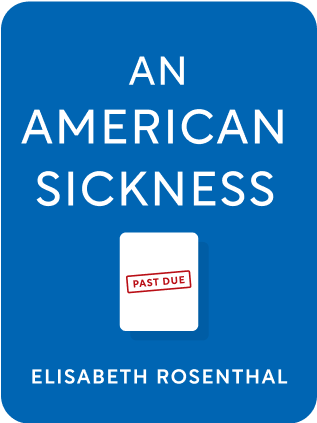

This article is an excerpt from the Shortform book guide to "An American Sickness" by Elisabeth Rosenthal. Shortform has the world's best summaries and analyses of books you should be reading.
Like this article? Sign up for a free trial here .
Is Elisabeth Rosenthal’s An American Sickness worth reading? What is the main reason the quality of U.S. healthcare lags behind other developed countries?
American healthcare is commonly known to be in a deplorable state, costing 18% of GDP while underperforming in quality among developed nations. In her book An American Sickness, Elisabeth Rosenthal examines the competing interests of the major blocs in American healthcare to unpack how it got to its current overpriced yet underperforming state.
Here is a brief overview of An American Sickness: How Healthcare Became Big Business.
An American Sickness: How Healthcare Became Big Business.
It’s commonly known that US healthcare costs 18% of the country’s GDP, or $3 trillion a year. Overall health outcomes are mediocre compared to other developed countries, which generally spend half of that amount per person.
Despite the high amounts we spend on healthcare, it’s never quite clear what we’re paying for, because the billing practices are incomprehensible. It’s especially bad when compared to other things we’re used to paying for.
And it’s not clear why things cost so much. Why does getting a few stitches in an ER cost $5,000? Why does a pill of Tylenol in the hospital cost $55?
Written by a Harvard-trained doctor and New York Times reporter, the book An American Sickness clarifies how deeply entrenched the interests are and why it’s so difficult to change anything.
Below is quick summary of Elisabeth Rosenthal’s 2017 book An American Sickness: How Healthcare Became Big Business.
A Dysfunctional Market
In summary, U.S. healthcare is a dysfunctional market. The normal economic laws of supply and demand, and of competition and pricing, are not operating here.
The author presents ten rules of this distorted market:
- Always opt for more treatment. Choose the most expensive option that’s available.
- Being treated for a disease over a lifetime is better than a one-time cure.
- For hospitals and providers, providing good care is less important than good amenities and marketing.
- Over time, as a technology ages, the treatment can get more expensive rather than cheaper.
- There is little competition in the market. Patients have little choice in what providers they can go to.
- More competitors doesn’t mean lower prices. In healthcare, more competitors can actually drive prices up.
- Large providers don’t use their economies of scale to lower costs and prices. Instead, they simply take advantage of their local monopoly to demand more.
- There are no fixed prices for medical procedures or tests.
- Billing practices are out of control. Providers will bill for anything they possibly can.
- Vendors will charge the maximum prices the market will bear.
The Basics of US Healthcare and Incentives
The major blocs in U.S. healthcare are:
- Providers/vendors: they provide medical care and get reimbursed by insurers.
- Hospitals
- Doctors
- Pharmaceuticals
- Medical devices
- Insurers (eg Blue Cross): they receive premiums and pay vendors for healthcare
- Employers: in the US, they are the major payers to insurers
- Patients: people who receive medical care
Each bloc has opposing interests:
- Providers want to get paid more for doing less work.
- Insurers want to get paid more premiums and pay less in medical care.
- Employers want to pay lower premiums and get happier employees.
- Patients want to pay less and get more healthcare and flexibility.
No matter how the incentives are set, participants in healthcare will generally exploit the incentives to their maximum. And if the incentives don’t align with quality and cost-effectiveness, you don’t get quality and cost-effectiveness.
This profit-seeking behavior manifests across all stakeholders:
- Hospitals and doctors bill for everything they can possibly get reimbursed for. They push for higher-cost care and the most expensive technology, despite lacking proof of better outcomes.
- Doctors get paid according to procedure time and complication (RVUs), without consideration of cost efficiency or outcome. Furthermore, they lobby to protect their own responsibilities, such as limiting the prescription power of pharmacists, and to cap the number of medical residents trained per year.
- Pharmaceutical companies extend patent lifespans through several strategies (discussed in the full summary). They restrict competition with generics by gaming prescribing law.
- Insurers push higher costs into premiums, co-pays, and deductibles for employers and patients.
- Patients don’t directly pay for care, so they often push for the higher priced, more technologically advanced option.
- Even non-profit disease foundations are funded by pharma and invest in startups. A diabetes foundation may own shares in a company that produces a diabetes treatment, thus complicating its incentives to push for more accessible, lower-cost treatments.
- Even the FDA benefits from fees for each application for a drug, incentivizing more me-too drug applications.
A Dysfunctional Market
The maximization of incentives is true of any market, but several factors make healthcare an especially dysfunctional market.
- Consolidation of healthcare providers has led to functional monopolies in certain geographies.
- Massive health systems consolidate and become the only game in town. If you have the only maternity ward in the local region, all the local patients want access to you.
- Patients want insurance that covers this big player, and reject narrow-network insurance. Thus employers are pressured to get insurance with good coverage.
- Therefore, large health systems with a local monopoly have massive leverage over insurers in setting prices and favorable policies.
- Given the complexity of medicine, most patients cannot be fully informed about the tradeoffs of medical treatment. Thus they are swayed by pharma marketing and providers, who have their own competing incentives.
- The recipients of healthcare (patients) are not paying directly for the service—insurers are. This leads to moral hazard problems, where patients tend to opt for the highest-priced care if they’re not paying for it.
- Doctors are often ignorant of prices and thus can’t serve as effective advisors for the patient on cost-effectiveness.
- Prices are opaque and often discovered only after treatment. Often this is because of confidentiality agreements between insurers and providers.
- High regulatory barrier to entry for getting drugs/devices approved (FDA trials) limits open competition for generics.
By now, all the major blocs are so deeply entrenched that any zero-sum change is strongly opposed. For example, lowering compensation to doctors might mean cheaper costs for the system, but doctors will staunchly oppose this.
Fragmentation makes it difficult to change anything systemically.
- Much of healthcare is regulated on a state-by-state basis instead of nationally.
- Employers are fundamentally competing with each other for talent, impeding collaboration between employers.
- Even within each bloc, there is further fragmentation.
- Providers are divided into specialties, and they battle for a fixed pie of Medicare RVU reimbursements.
- Different blocs of patients want different things (eg AARP vs millennials)
- Other countries have a single payer (the government) that can negotiate prices and reject treatments not proven to be cost-effective. However, much of the US is philosophically opposed to expansion of federal government and allergic to structures resembling “socialism.”
What You Can Do
Even if you can’t change the healthcare system yourself, what can you do to reduce your own price of care? The book recommends these actionables:
Question your doctor and hospital about fees before you get treatment.
- How much will this treatment cost? Then compare with online prices for your local area.
- How will this test/exam/surgery change my treatment? If there’s no reasonable justification, pass on treatment.
- Are there cheaper alternatives that are equally good?
- Can you send my testing to an in-network lab?
Wait before getting treatment.
- Many symptoms resolve themselves.
- Unnecessary scans and tests get insignificant findings that might prompt unnecessary care.
If admitted to the hospital:
- When admitted to the hospital, you’ll be asked to accept financial responsibility for charges not covered by your insurer. Write in “as long as the providers are in my insurance network.”
- If you’re put in a private room, ask “will insurance cover this private room, or will there be a supplement fee?” If there is a fee, ask how much it is, then consider asking for a shared room with no fee.
- Ask to know the name and role of every person appearing at bedside, as well as what they’re doing. Write all this information down.
- You can refuse care from any provider. This includes less useful interactions, like the physical therapist who helps you out of bed and the dermatologist examining a harmless rash.
Dealing with bills
- Negotiate large bills. Hospitals more or less expect you to do this, which is why they have high sticker prices.
- Request complete itemization of hospital bills to see what the breakdown of costs is.
- Check the bill against your notes in hospital. Over 50% of bills contain mistakes.
- Protest bills in writing, not by phone.
Look at all the costs of your health insurance.
- Premiums
- Figure out what % you have to cover. If it’s deducted automatically from your paycheck, you don’t feel the full extent of the cost.
- Deductibles
- Are these calculated per person or for the whole family?
- Are there separate deductibles for in-network vs out-of-network care?
- Co-pays
- These are now often a % of the bill.
- For doctors, are the copays different for generalists vs specialists?
- For medicine, does the co-pay differ depending on whether it’s in the formulary or not?
- Out-of-pocket maximum
- Does this include drug costs?
- Will you be asked for co-pays even after meeting this number?
- Find the insurance with the lowest total cost for your typical needs.
Lower your costs of drugs.
- Find good substitutes for your medicines.
- Find cheaper formulations that you can still use for equivalent treatment, such as higher dosages that you can split into smaller pills.
- Avoid fancy formulations without clear benefit. This includes combinations of two generic medicines (like Duexis), extended release tablets, and creams.
- Shop at GoodRx.com for out-of-pocket cash prices of medicine. It may actually be cheaper than your copay.

———End of Preview———
Like what you just read? Read the rest of the world's best book summary and analysis of Elisabeth Rosenthal's "An American Sickness" at Shortform .
Here's what you'll find in our full An American Sickness summary :
- How U.S. healthcare got to the state it's in today
- Why it's so difficult to make any changes to the healthcare system
- What you can do to lower your personal healthcare costs






